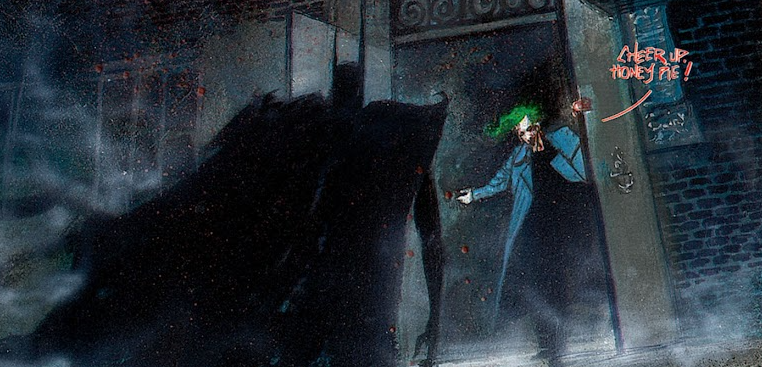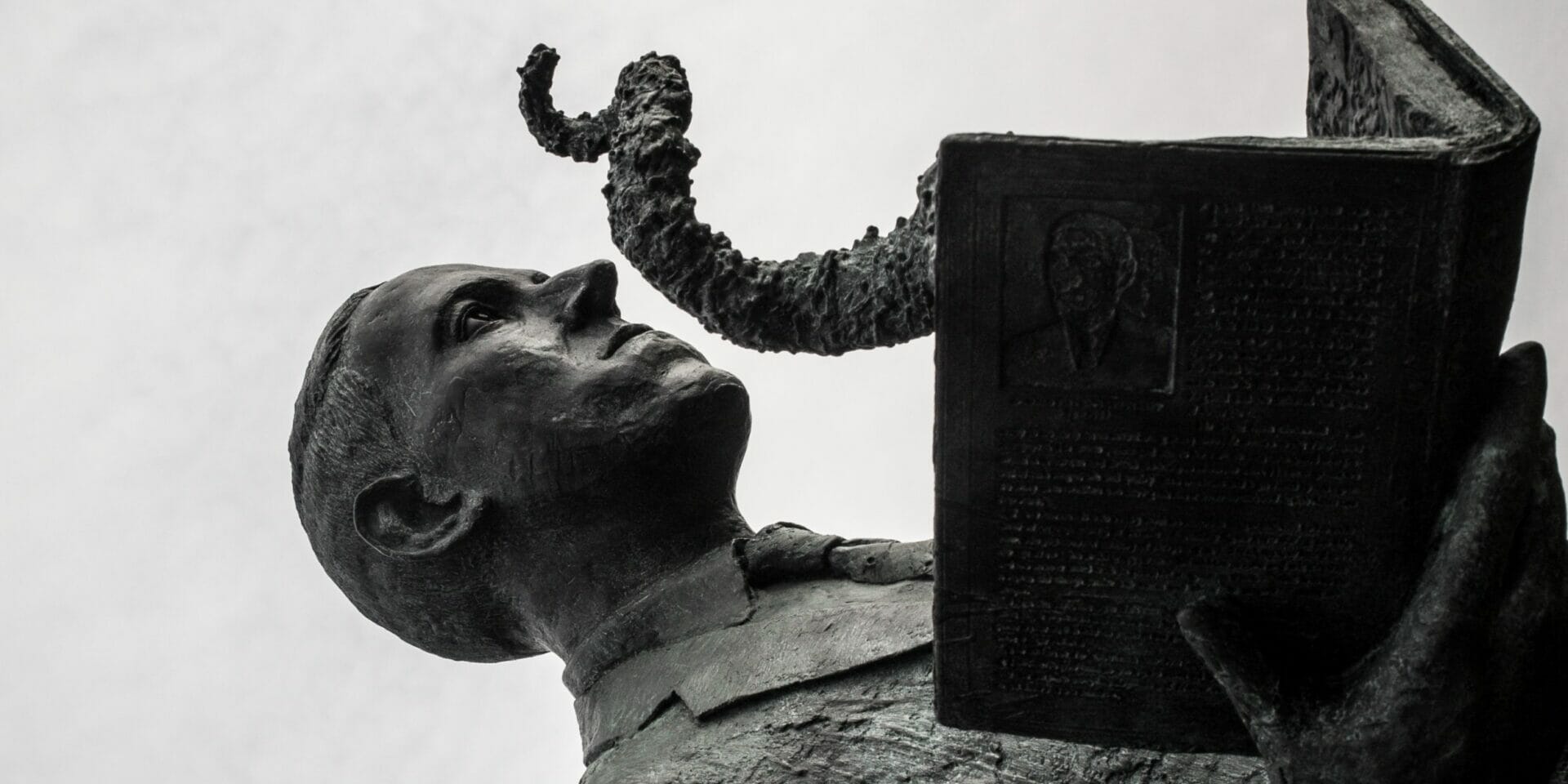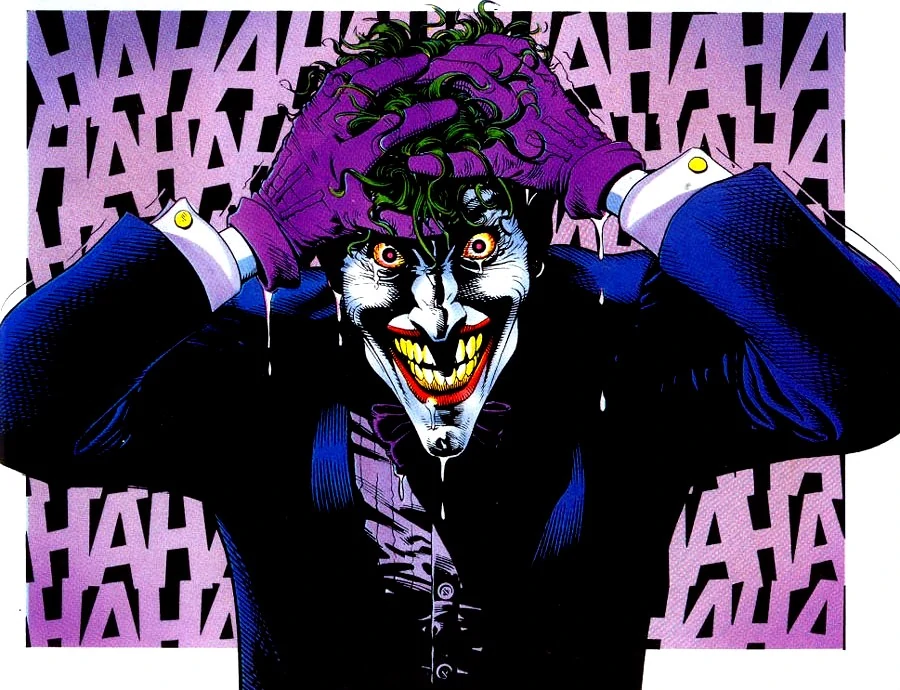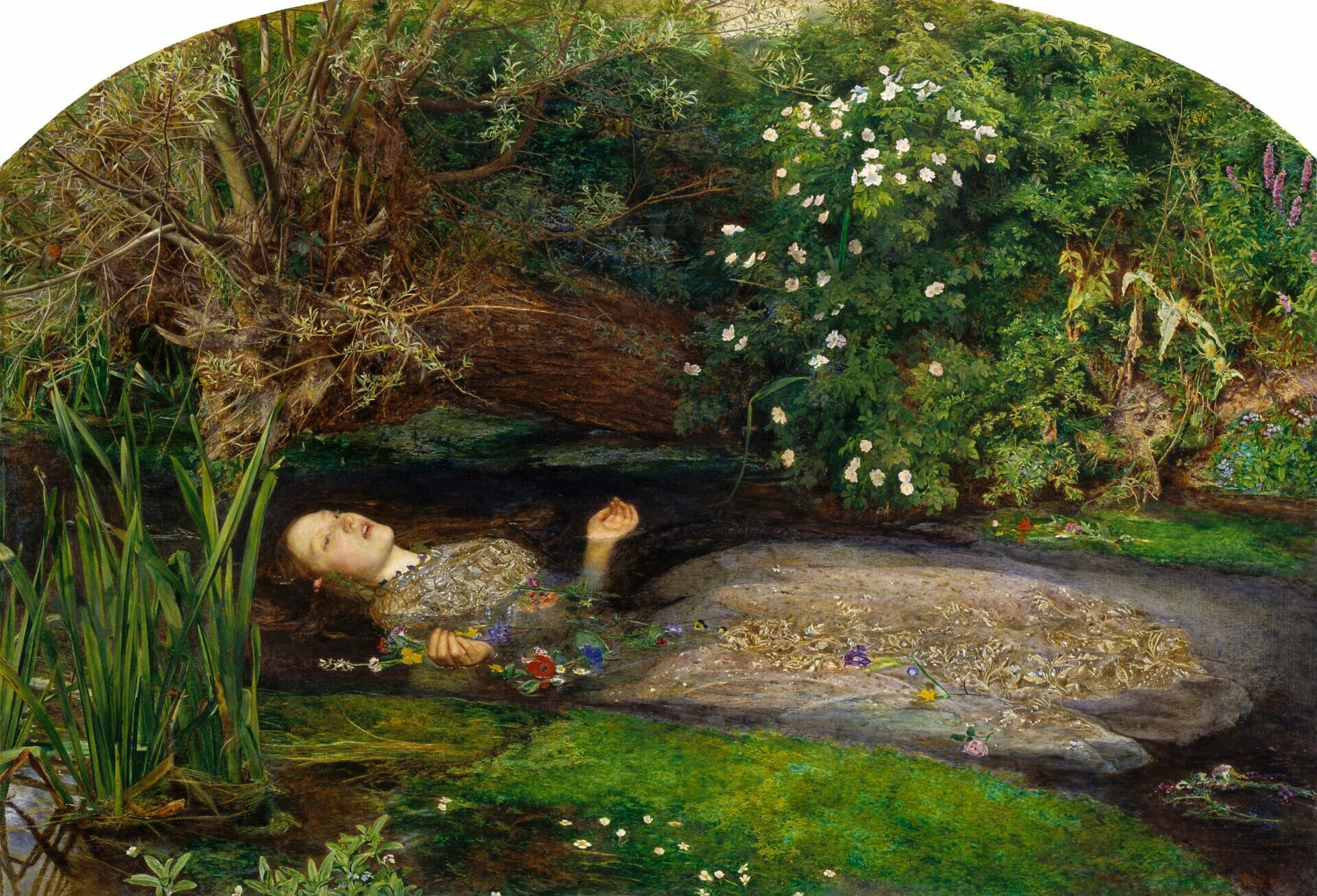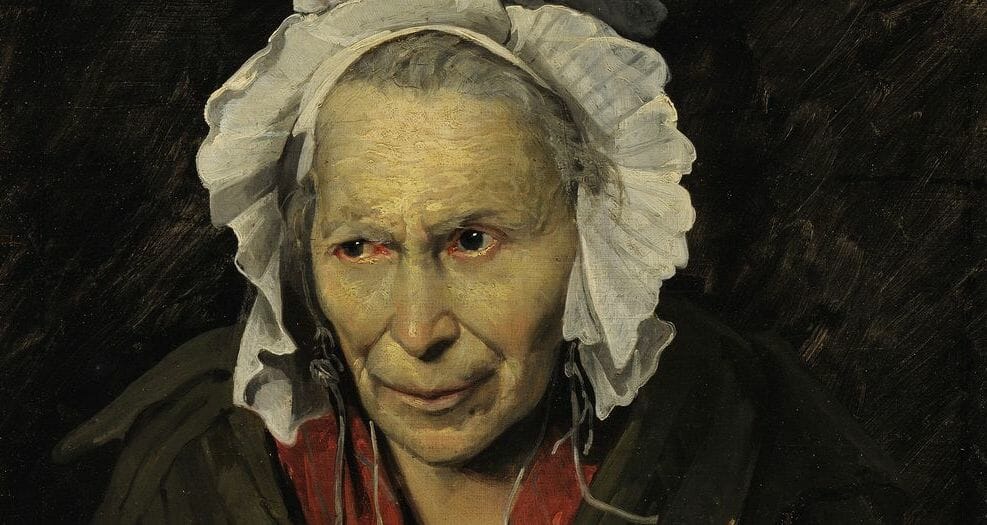
Portrait of a Woman Suffering from Obsessive Envy | Géricault's Social Complaint
Material/Technique
Dimensions
In 1822 the French painter Théodore Géricault, one of the greatest representatives of Romanticism in France, produced one of his best-known and most poignant paintings, Portrait of a Woman Suffering from Obsessive Envy (or The Hyena of the Salpêtrière). The painting is part of a series of ten portraits of the alienated, of which, however, only five are known, including the one mentioned above: A Woman Addicted to Gambling, A Child Snatcher, A Kleptomaniac, and A Man Suffering from Delusions of Military Command. The Portraits of the Insane were made between 1819 and 1824, and the protagonists of the canvases are subjects imprisoned inside some asylums and suffering from various monomanias.
For the first time in the history of art, Géricault makes ordinary people, outcasts such as asylum patients, the protagonists, breaking away from the academic tradition that had up to then denied them their interest. The painter investigates the human aspect of their illness that confines these alienated people to being excluded from the social context and thus strikes the viewer in the soul through the strong expressiveness that characterizes these subjects.
Portrait of a Woman Suffering from Obsessive Envy
In the Portraits of the Insane, Géricault portrays patients of the female asylum at Salpêtrière and patients of the male asylums at Charenton and Bicȇtre. The conceptual centre of the work as a whole is madness and mental alteration and the way its devastating aspects can be captured on the faces of the patients. In particular, Géricault depicts psychiatric patients suffering from monomanias, a term derived from the Greek monos (“alone”) and mania (“madness”) and referring to a disorder of the mind manifested by obsessive attachment to something. The monomanias represented in the cycle in the portraits that have survived to the present are that of child abduction, playfulness, military command, kleptomania, and envy.
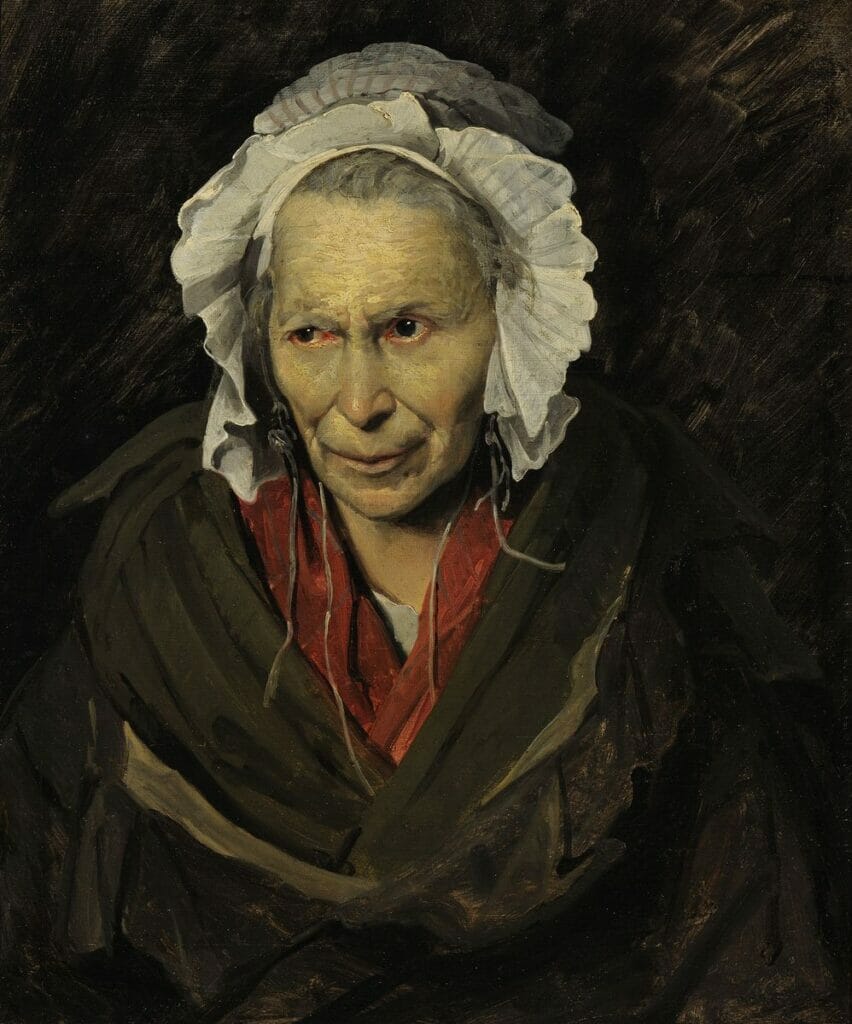
La Monomane de l’Envie, 1822-23. Image © Lyon MBA – Photo Alain Basset
Portrait of a Woman Suffering from Obsessive Envy is the most famous in the cycle and is preserved at the Musée des Beaux-Arts in Lyon. The painting depicts the monomania of envy or hatred of the good of others. The subject depicted is a half-length bust of an elderly woman dressed in worn and shabby clothes, a heavy brown coat, a shirt that can be glimpsed, and a red scarf. The woman has a white cap around her wrinkled face, grey hair, and small, red, mean eyes and she is looking at something outside the painting, in real life, her obsession. The woman is caught in her feeling of rancour, and her pale face stands out against the dark, solid-coloured background that sets her off.
The Mystery Behind Portraits
The Portrait of a Woman Suffering from Obsessive Envy and the series Portraits of the Insane to which it belongs have long been and continue to be the focus of complex critical debate. Indeed, it is not known with certainty, other than the precise date of composition, why they were created. In the catalogue raisonné by Charles Clément, biographer of Théodore Géricault, he refers to the cycle as ten “studies of alienated heads” and says it belonged to the psychiatrist Jean Georget, with whom Géricault was undergoing treatment due to the depressive state he was in as a result of overwork, and the disappointments he received from the failure of his greatest work, The Raft of the Medusa in 1819.
While it is known with certainty, however, that the paintings belonged to the psychiatrist who treated the painter, the reason for making them is not certain. Critics have formulated three hypotheses. K. Berger considers that the portraits served as teaching materials for Georget to lecture on pathology. For critic Aimé-Azam, the cycle of the alienated was a thank you for the doctor’s treatment. Still others, believe that the painting cycle was given as a task to Géricault for therapeutic purposes.
The influence of psychiatric studies
For the portraits of the alienated, and in particular for the Portrait of a Woman Suffering from Obsessive Envy, Géricault drew inspiration from Georget’s theories in his 1820 treatise De la folie: considérations sur cette maladie. Georget along with Jean-Étienne Dominique Esquirol, whose student he was, is one of the pioneers of modern psychiatry.
Esquirol, in fact, saw mental illness as an ailment of the body, like any other common illness, and instead rejected all those theological explanations that blamed the devil for madness. Moreover, as an advocate of physiognomy, he thought that illness could be diagnosed by physical appearance. According to this idea, the doctor had the artist Georges-Francoise Gabriel make 200 drawings of his patients. Georget is thought to have done the same with Géricault. Both psychiatrists, however, were pioneers in psychiatric science because they no longer regarded the insane as individuals to be excluded and isolated but rather as ill people to be treated. Géricault’s work, indeed, seems to stand for these new achievements of nineteenth-century psychiatry.
The Portrait of a Woman Suffering from Obsessive Envy is portrayed in the manner in which Dr. Georget describes the symptoms of this mania in his dissertation: “The blood circulation becomes more active; the blood pressure rises; the arteries of the head beat loudly; the eyes shine and are bloodshot.”
Art on the side of the excluded
Just like The Portrait of a Woman Suffering from Obsessive Envy and the Portraits of the Insane , Todd Phillips‘ 2019 film Joker has loneliness, madness, and marginalization at its centre. Based on the DC Comics character of the eponymous name, played by Joaquin Phoenix the film shows the human side of DC’s most famous loon, just as Géricault shows the alienated portrayed caught in their human being. The painter by placing asylum patients at the centre of the scene in their fullest expressiveness thus denounces the social isolation to which they are subjected, which also in Joker becomes a trigger for uncontrolled madness. Like Géricault, Todd Phillips has placed the ill at the centre, restoring to him the dignity as an individual that he had lost.
Because of the use of pictorial art as a social denunciation, and of the high expressiveness and crudeness of such unusual and unconventional portraits, the Portraits of the Insane with The Portrait of a Woman Suffering from Obsessive Envy at the forefront, has left a strong mark on Western Art history, serving as a point of reference for the later current of Realism as well.
Tag
Buy a ☕ for Hypercritic







